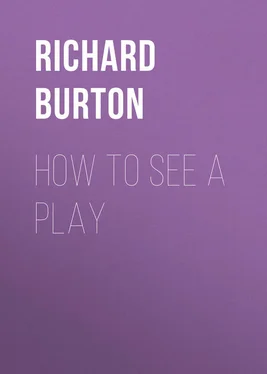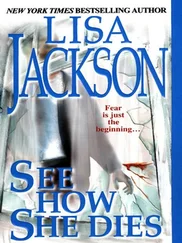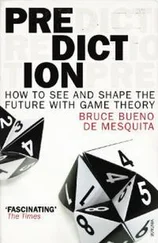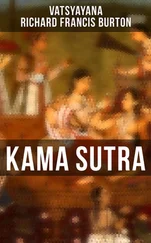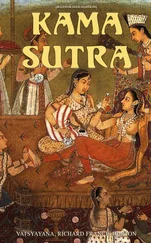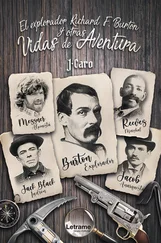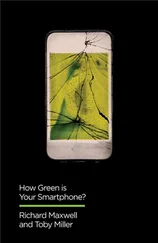Richard Burton - How to See a Play
Здесь есть возможность читать онлайн «Richard Burton - How to See a Play» — ознакомительный отрывок электронной книги совершенно бесплатно, а после прочтения отрывка купить полную версию. В некоторых случаях можно слушать аудио, скачать через торрент в формате fb2 и присутствует краткое содержание. ISBN: , Жанр: foreign_antique, foreign_prose, foreign_dramaturgy, на английском языке. Описание произведения, (предисловие) а так же отзывы посетителей доступны на портале библиотеки ЛибКат.
- Название:How to See a Play
- Автор:
- Жанр:
- Год:неизвестен
- ISBN:http://www.gutenberg.org/ebooks/32433
- Рейтинг книги:5 / 5. Голосов: 1
-
Избранное:Добавить в избранное
- Отзывы:
-
Ваша оценка:
- 100
- 1
- 2
- 3
- 4
- 5
How to See a Play: краткое содержание, описание и аннотация
Предлагаем к чтению аннотацию, описание, краткое содержание или предисловие (зависит от того, что написал сам автор книги «How to See a Play»). Если вы не нашли необходимую информацию о книге — напишите в комментариях, мы постараемся отыскать её.
How to See a Play — читать онлайн ознакомительный отрывок
Ниже представлен текст книги, разбитый по страницам. Система сохранения места последней прочитанной страницы, позволяет с удобством читать онлайн бесплатно книгу «How to See a Play», без необходимости каждый раз заново искать на чём Вы остановились. Поставьте закладку, и сможете в любой момент перейти на страницу, на которой закончили чтение.
Интервал:
Закладка:
How to See a Play
PREFACE
THISbook is aimed squarely at the theater-goer. It hopes to offer a concise general treatment upon the use of the theater, so that the person in the seat may get the most for his money; may choose his entertainment wisely, avoid that which is not worth while, and appreciate the values artistic and intellectual of what he is seeing and hearing.
This purpose should be borne in mind, in reading the book, for while I trust the critic and the playwright may find the discussion not without interest and sane in principle, the desire is primarily to put into the hands of the many who attend the playhouse a manual that will prove helpful and, so far as it goes, be an influence toward creating in this country that body of alert theater auditors without which good drama will not flourish. The obligation of the theater-goer to insist on sound plays is one too long overlooked; and just in so far as he does insist in ever-growing numbers upon drama that has technical skill, literary quality and interpretive insight into life, will that better theater come which must be the hope of all who realize the great social and educative powers of the playhouse. The words of that veteran actor-manager and playwright of the past, Colley Cibber, are apposite here: "It is not to the actor therefore, but to the vitiated and low taste of the spectator, that the corruptions of the stage (of what kind soever) have been owing. If the publick, by whom they must live, had spirit enough to discountenance and declare against all the trash and fopperies they have been so frequently fond of, both the actors and the authors, to the best of their power, must naturally have served their daily table with sound and wholesome diet." And again he remarks: "For as their hearers are, so will actors be; worse or better, as the false or true taste applauds or discommends them. Hence only can our theaters improve, or must degenerate." Not for a moment is it implied that this book, or any book of the kind, can make playwrights. Playwrights as well as actors are born, not made – at least, in the sense that seeing life dramatically and having a feeling for situation and climax is a gift and nothing else. The wise Cibber may be heard also upon this. "To excel in either art," he declares, "is a self-born happiness, which something more than good sense must be mother of." But this may be granted, while it is maintained stoutly that there remains to the dramatist a technic to be acquired, and that practice therein and reflection upon it makes perfect. The would-be playwright can learn his trade, even as another, and must, to succeed. And the spectator (our main point of attack, as was said), the necessary coadjutor with player and playwright in theater success, can also become an adept in his part of this coöperative result. This book is written to assist him in such coöperation.
CHAPTER I
THE PLAY, A FORM OF STORY TELLING
THEplay is a form of story telling, among several such forms: the short story, or tale; the novel; and in verse, the epic and that abbreviated version of it called the ballad. All of them, each in its own fashion, is trying to do pretty much the same thing, to tell a story. And by story, as the word is used in this book, it will be well to say that I mean such a manipulation of human happenings as to give a sense of unity and growth to a definite end. A story implies a connection of characters and events so as to suggest a rounding out and completion, which, looked back upon, shall satisfy man's desire to discover some meaning and significance in what is called Life. A child begging at the mother's knee for "the end of the story," before bedtime, really represents the race; the instinct behind the request is a sound one. A story, then, has a beginning, middle and end, and in the right hands is seen to have proportion, organic cohesion and development. Its parts dovetail, and what at first appeared to lack direction and connective significance finally is seen to possess that wholeness which makes it a work of art. A story, therefore, is not a chance medley of incidents and characters; but an artistic texture so woven as to quicken our feeling that a universe which often seems disordered and chance-wise is in reality ordered and pre-arranged. Art in its story-making does this service for life, even if life does not do it for us. And herein lies one of the differences between art and life; art, as it were, going life one better in this rearrangement of material.
Of the various ways referred to of telling a story, the play has its distinctive method and characteristics, to separate it from the others. The story is told on a stage, through the impersonation of character by human beings; in word and action, assisted by scenery, the story is unfolded. The drama (a term used doubly to mean plays in general or some particular play) is distinguished from the other forms mentioned in substituting dialogue and direct visualized action for the indirect narration of fiction.
A play when printed differs also in certain ways; the persons of the play are named apart from the text; the speakers are indicated by writing their names before the speeches; the action is indicated in parentheses, the name business being given to this supplementary information, the same term that is used on the stage for all that lies outside dialogue and scenery. And the whole play, as a rule, is sub-divided into acts and often, especially in earlier drama, into scenes, lesser divisions within the acts; these divisions being used for purposes of better handling of the plot and exigencies of scene shifting, as well as for agreeable breathing spaces for the audience. The word scene, it may be added here, is used in English-speaking lands to indicate a change of scene, whereas in foreign drama it merely refers to the exit or entrance of a character, so that a different number of persons is on the stage.
But there are, of course, deeper, more organic qualities than these external attributes of a play. The stern limits of time in the representation of the stage story – little more than two hours, "the two hours traffic of the stage" mentioned by Shakespeare – necessitates telling the story with emphasis upon its salient points; only the high lights of character and event can be advantageously shown within such limits. Hence the dramatic story, as the adjective has come to show, indicates a story presenting in a terse and telling fashion only the most important and exciting things. To be dramatic is thus to be striking, to produce effects by omission, compression, stress and crescendo. To be sure, recent modern plays can be named in plenty which seem to violate this principle; but they do so at their peril, and in the history of drama nothing is plainer than that the essence of good play-making lies in the power to seize the significant moments of the stage story and so present them as to grip the interest and hold it with increasing tension up to a culminating moment called the climax.
Certain advantages and certain limitations follow from these characteristics of a play. For one thing, the drama is able to focus on the really interesting, exciting, enthralling moments of human doings, where a novel, for example, which has so much more leisure to accomplish its purpose to give a picture of life, can afford to take its time and becomes slower, and often, as a result, comparatively prolix and indirect. This may not be advisable in a piece of fiction, but it is often found, and masterpieces both of the past and present illustrate the possibility; the work of a Richardson, a Henry James, a Bennett. But for a play this would be simply suicide; for the drama must be more direct, condensed and rapid. And just in proportion as a novel adopts the method of the play do we call it dramatic and does it win a general audience; the story of a Stevenson or a Kipling.
Читать дальшеИнтервал:
Закладка:
Похожие книги на «How to See a Play»
Представляем Вашему вниманию похожие книги на «How to See a Play» списком для выбора. Мы отобрали схожую по названию и смыслу литературу в надежде предоставить читателям больше вариантов отыскать новые, интересные, ещё непрочитанные произведения.
Обсуждение, отзывы о книге «How to See a Play» и просто собственные мнения читателей. Оставьте ваши комментарии, напишите, что Вы думаете о произведении, его смысле или главных героях. Укажите что конкретно понравилось, а что нет, и почему Вы так считаете.
